Harmonic analysis of different plugins
This is a followup and analysis of plugins from the Harmonics page
Compressors
Frequency analysis is really interesting when looking at analog emulation plugins
Waves TG12345 Frequency Analysis
The TG12345 with the default settings, no compression, no noise, no drive, a little EQ

Note the added harmonics

Add 50% drive and see what happens
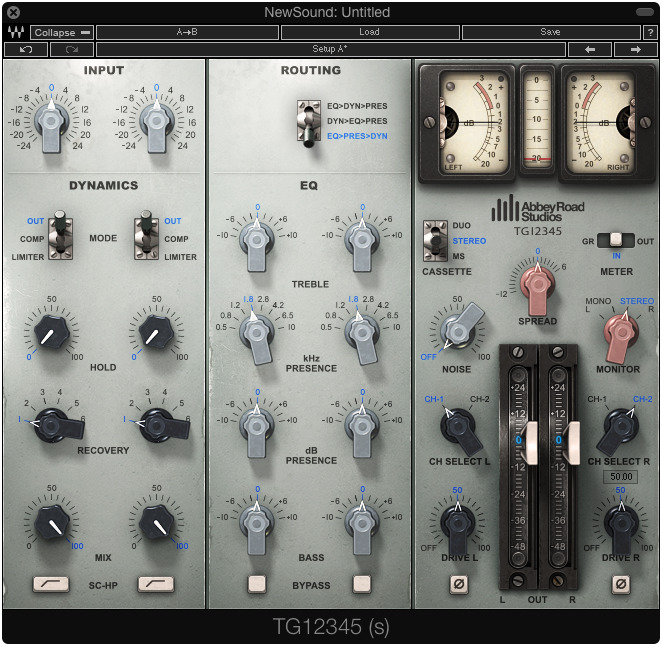
Results in the frequency analyzer with 50% drive
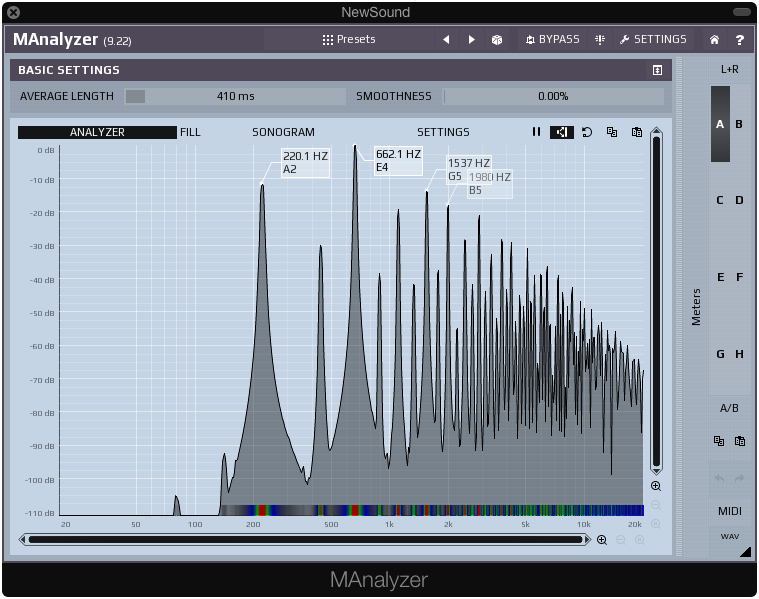
Add 100% noise
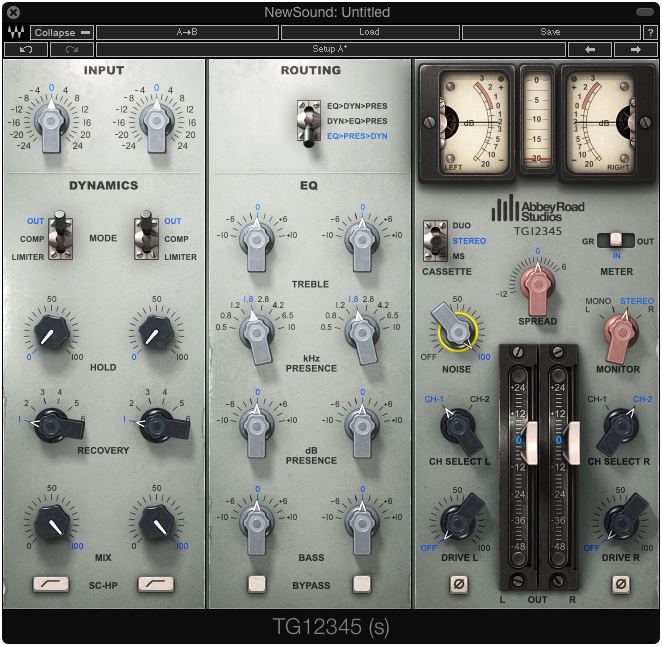
Results in the frequency analyzer with 100% noise

Waves HComp
Analog set to off.

Frequency response when analog is off
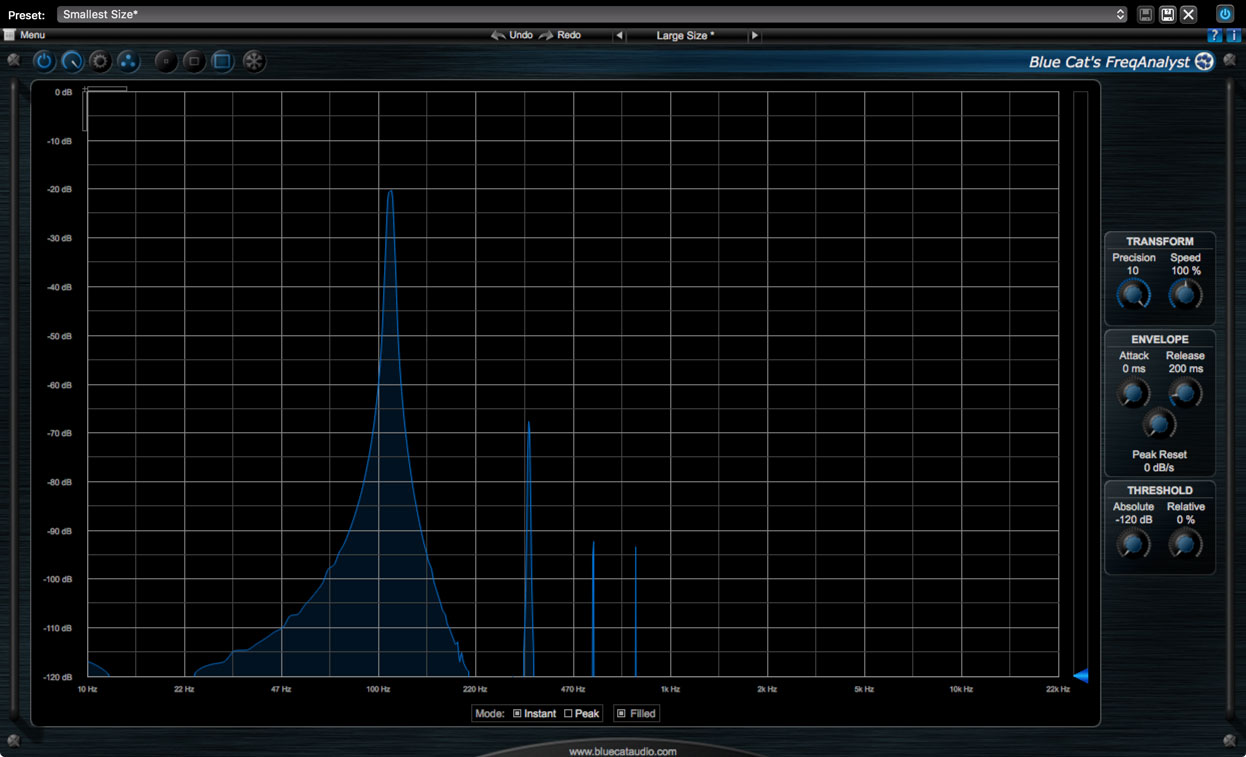
Analog set to 100%
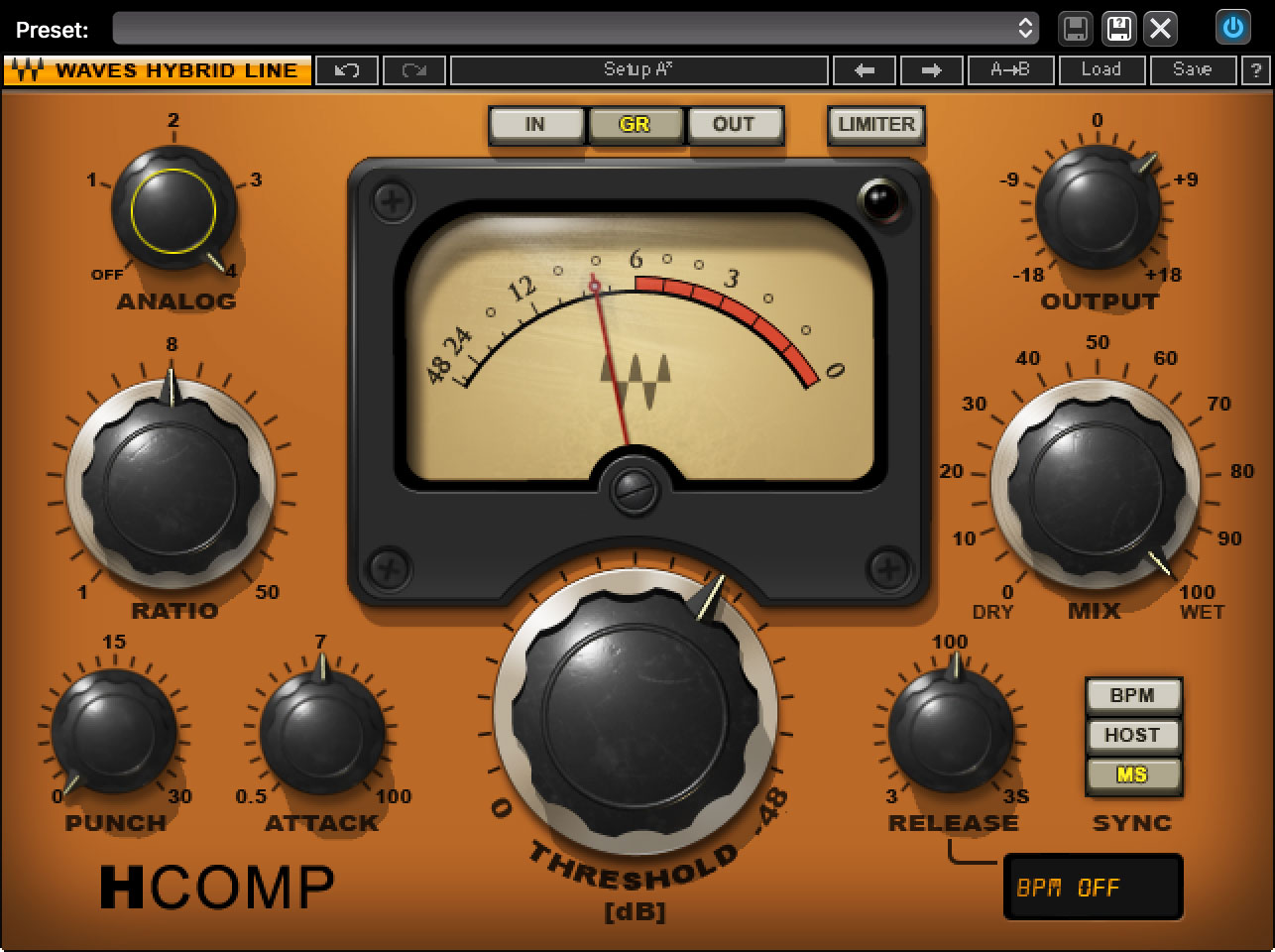
Frequency response HComp with Analog set to max
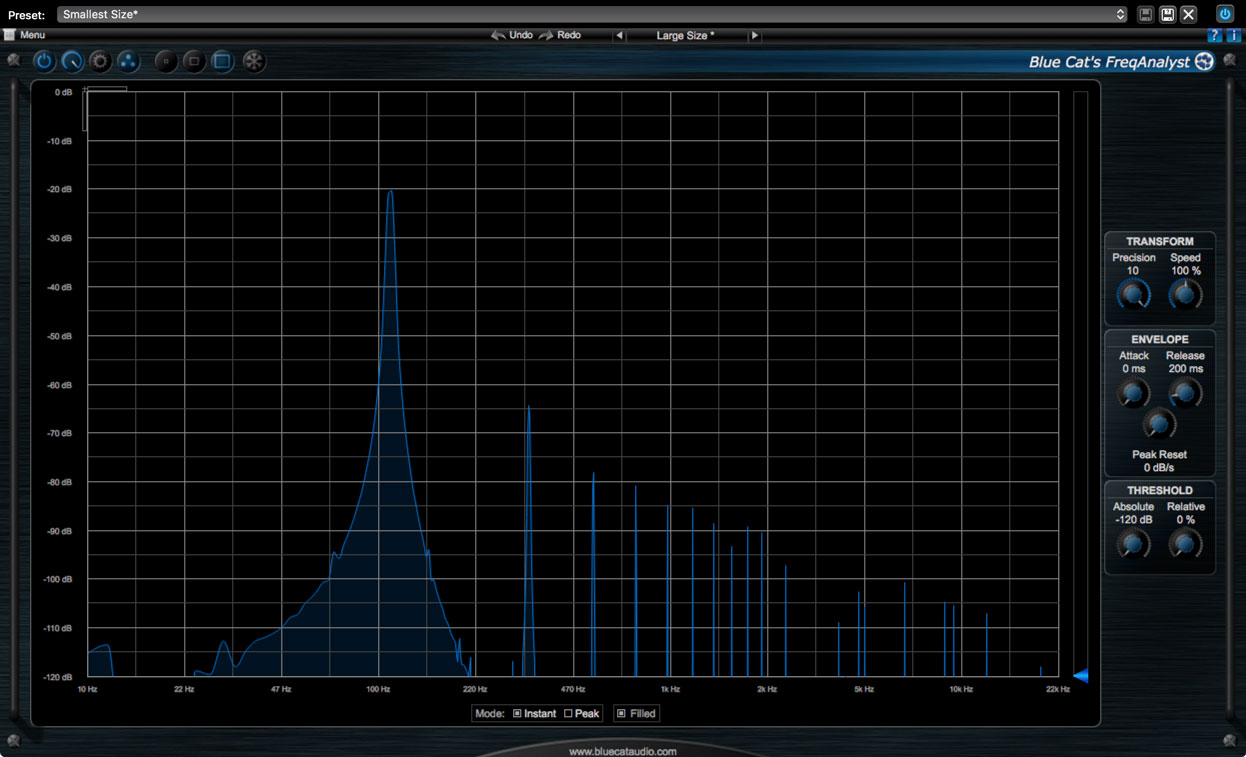
Klanghelm MJUC
Mk 1
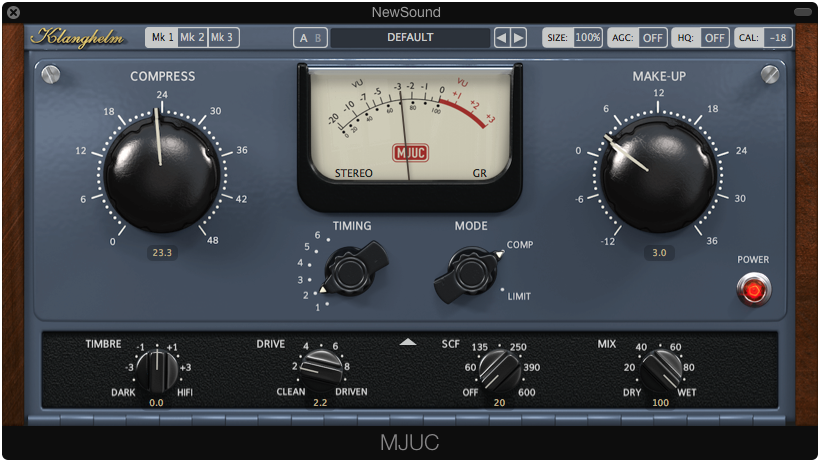
Frequency analysis, Mk 1 with some drive

Mk 2

Frequency analysis Mk 2, no drive but ISTAGE engaged
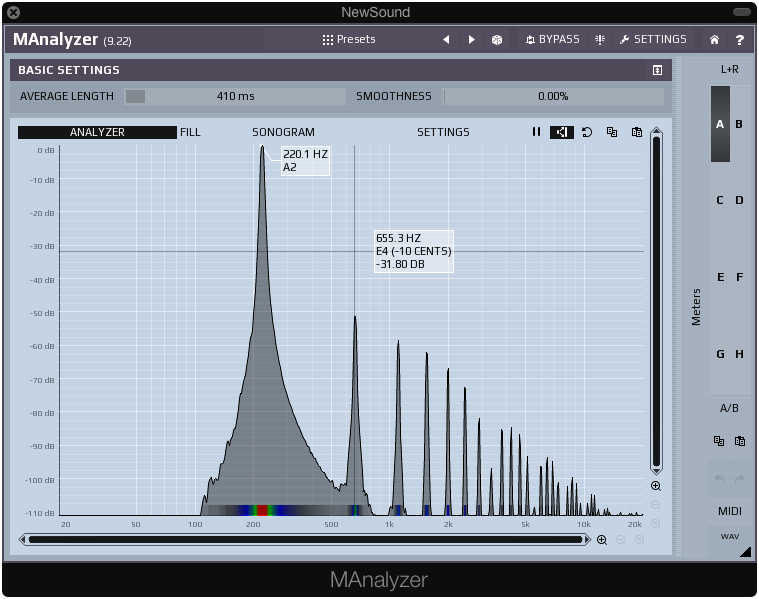
Mk 3
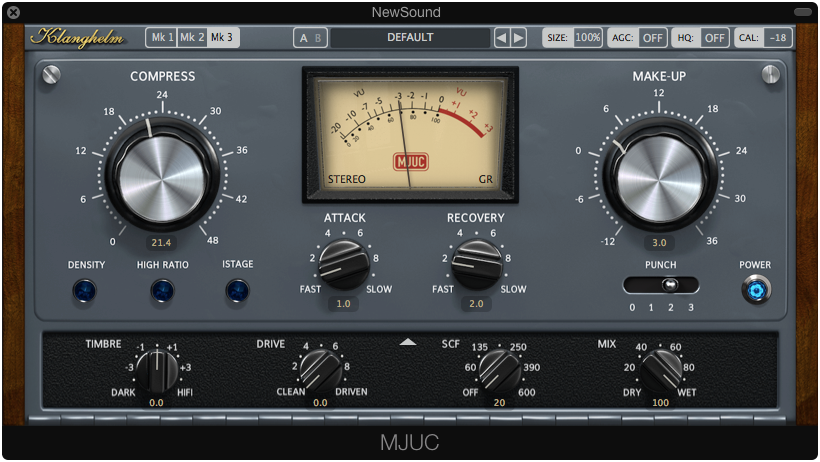
Frequency analysis Mk 3, no drive

Vladislav Goncharov Molot
Molot with Alpha engaged

Frequency analysis Molot with Alpha
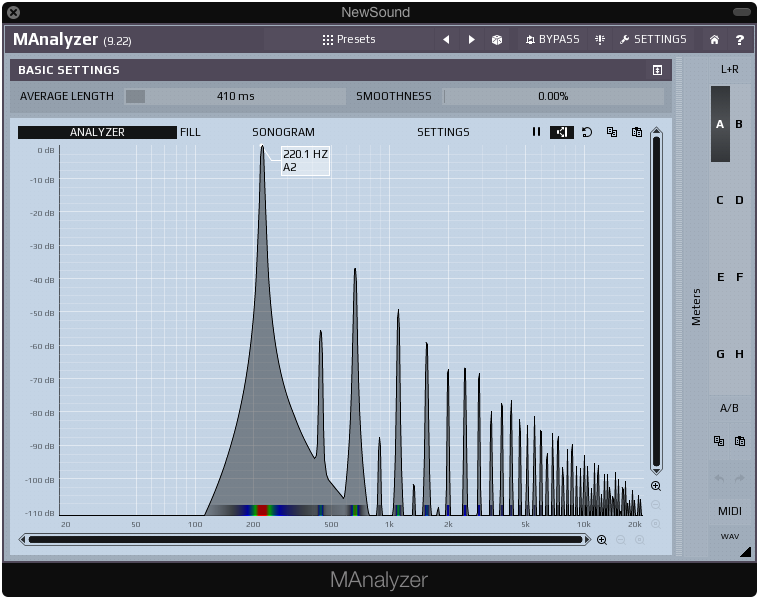
Molot with Sigma engaged

Frequency analysis Molot with Sigma
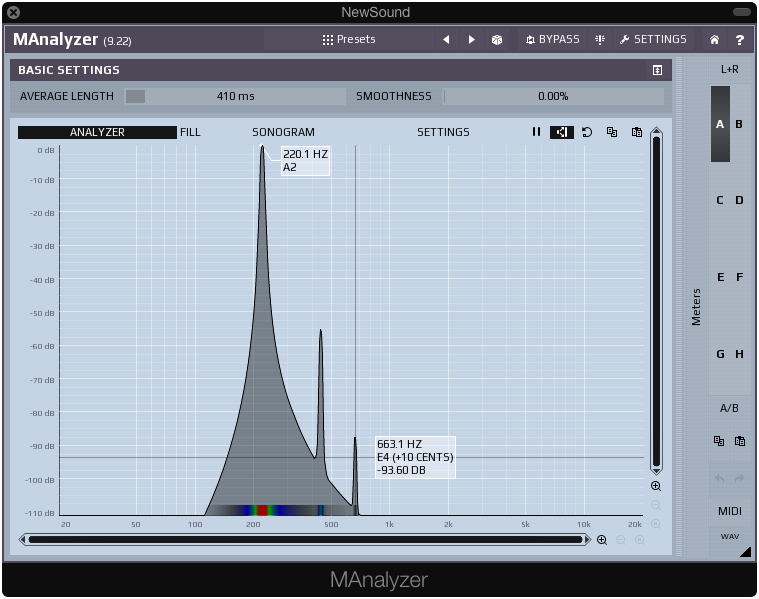
Tokyo Dawn Labs TDR Kotelnikov
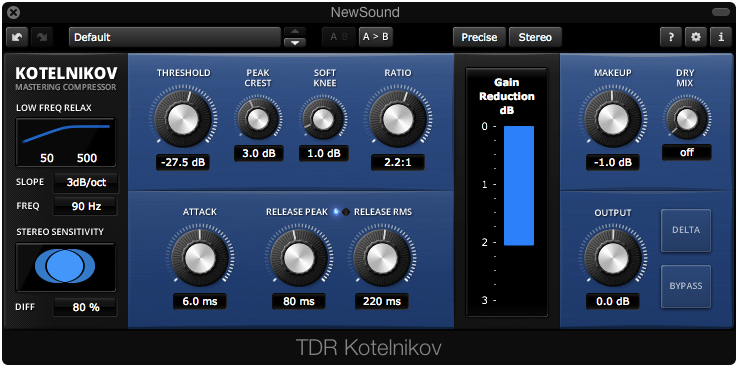
Frequency analysis TDR Kotelnikov

Logic Pro X Compressor
It's easy to overlook what you already have in your stock plugin folder. I didn't realize the big difference in how the harmonic content was changed before doing this simple analysis

Frequency analysis of the Platinum Digital. Not much harmonic content added with this one
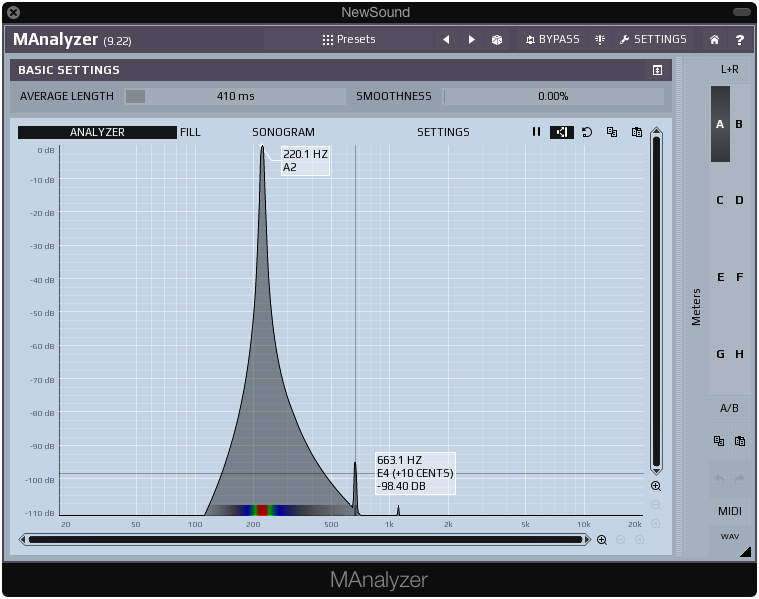
Studio VCA (Red console?)

Frequency analysis Studio VCA
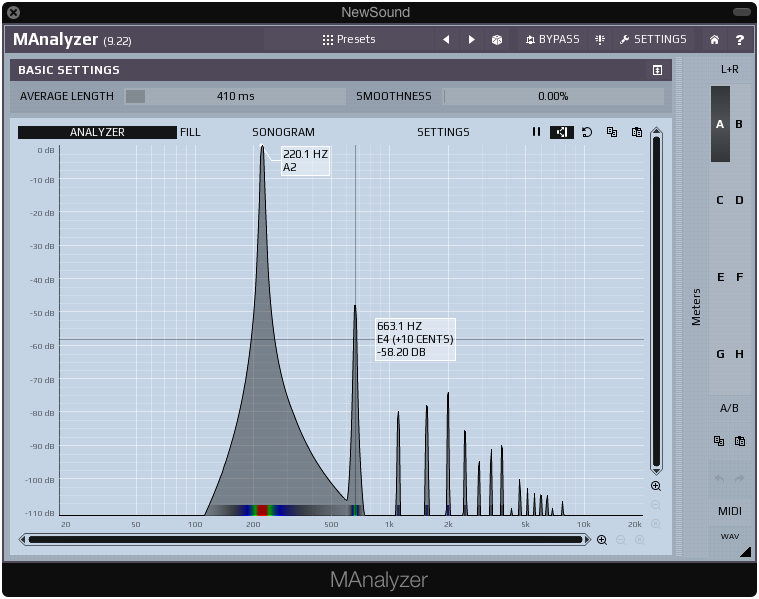
Studio FET
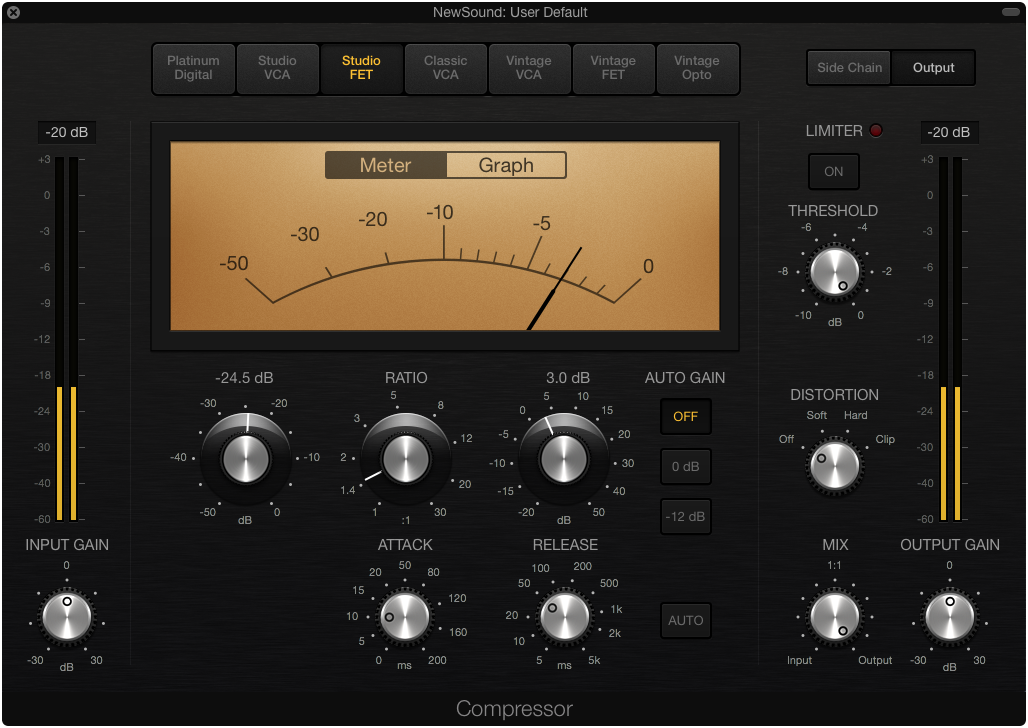
Frequency analysis Studio FET
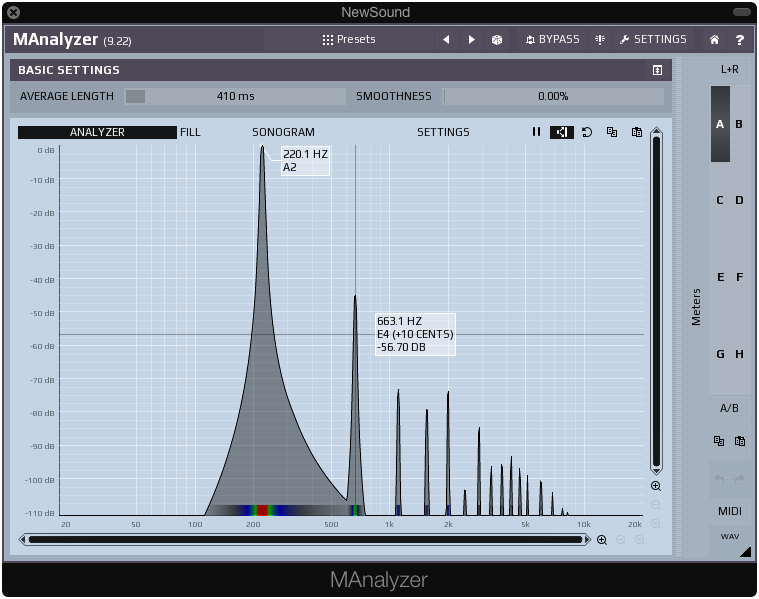
Classic VCA

Frequency analysis Classic VCA
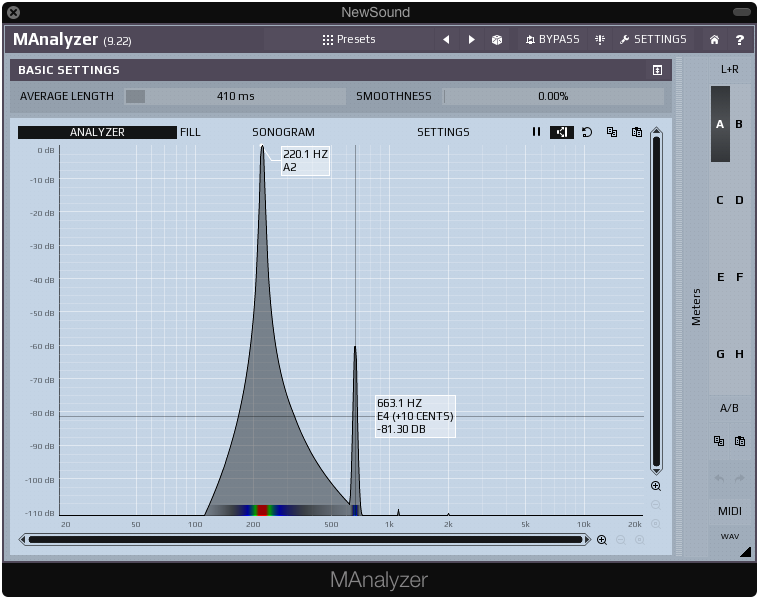
Vintage VCA
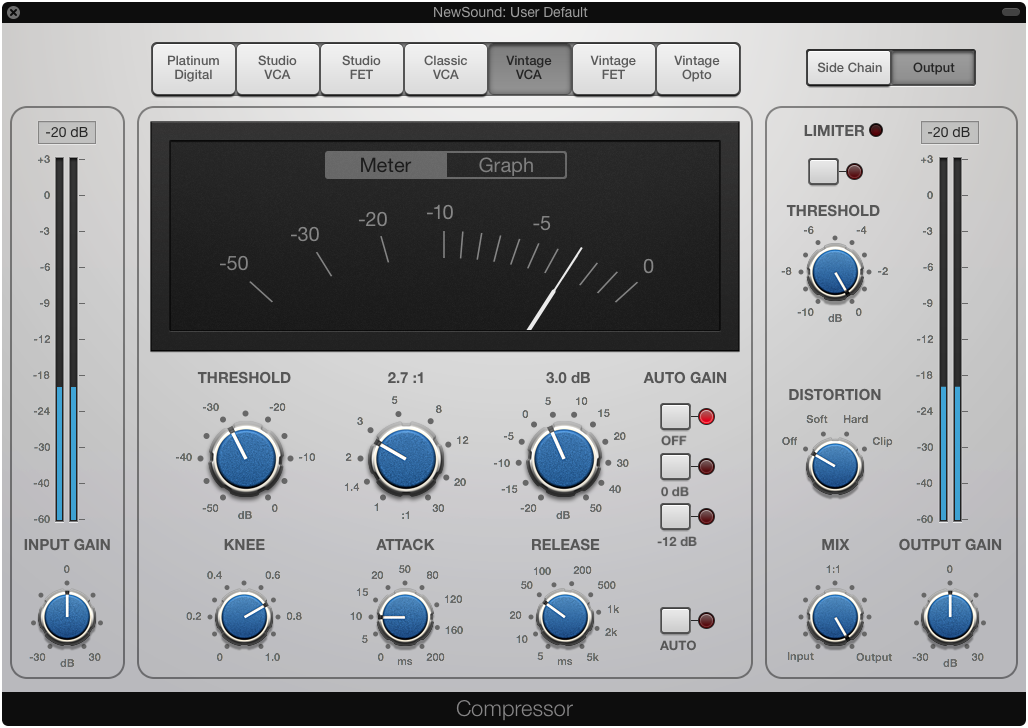
Frequency analysis Vintage VCA. Look at the added harmonic content both above and below the fundamental frequency

Vintage FET
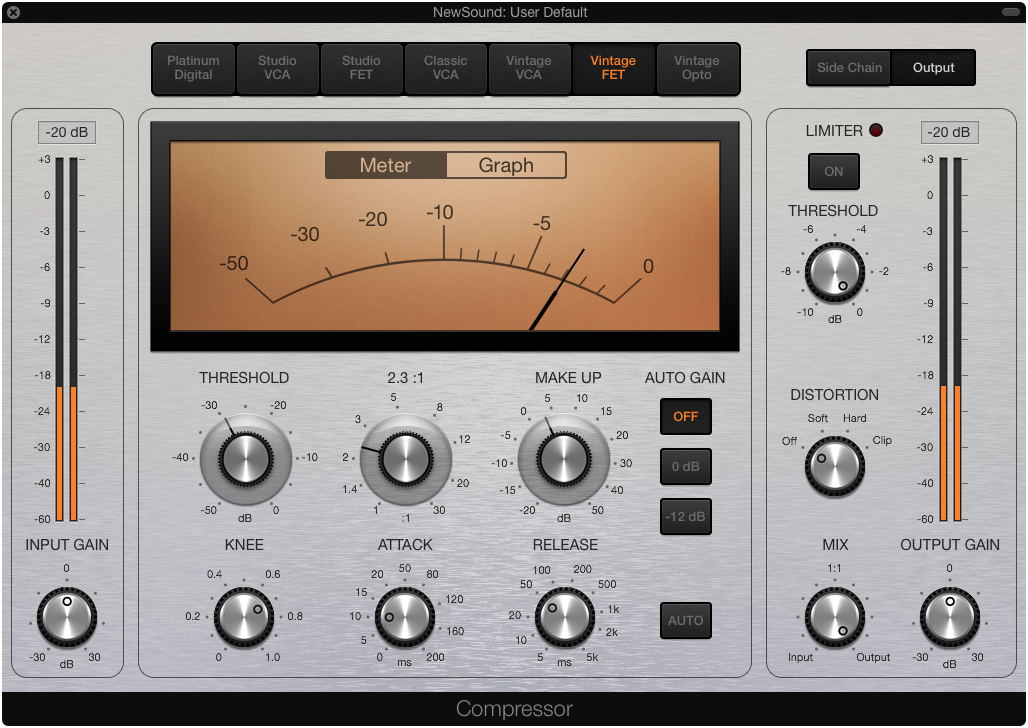
Frequency analysis Vintage FET. Look at the added harmonic content
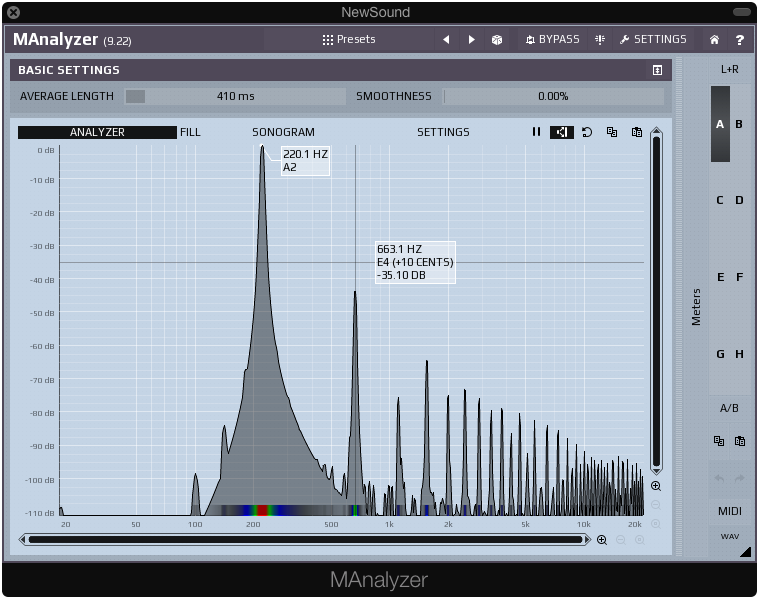
Vintage Opto

Frequency analysis Vintage Opto. Note the added harmonic content. If you are looking for vintage sound, have a closer look at the stock Logic Pro X Compressor
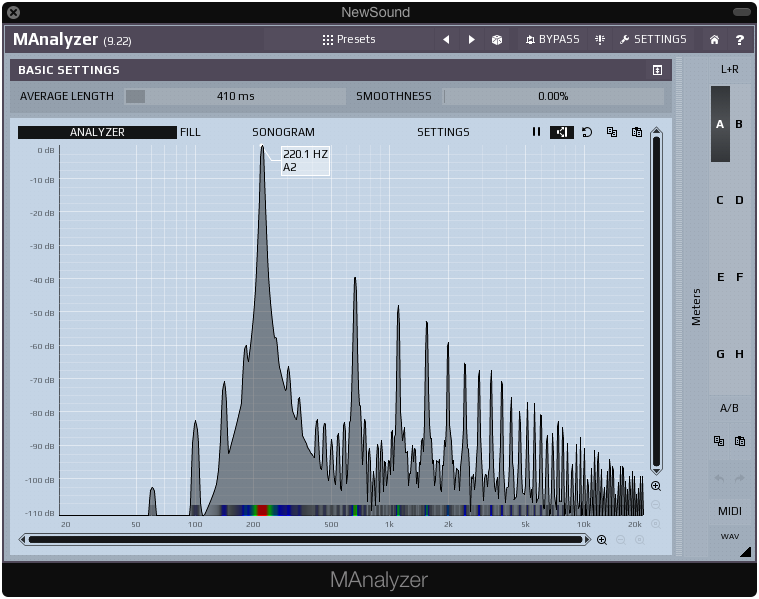
Waves dbx-160

Frequency analysis of the dbx-160

Waves API-2500

Frequency analysis of the API-2500
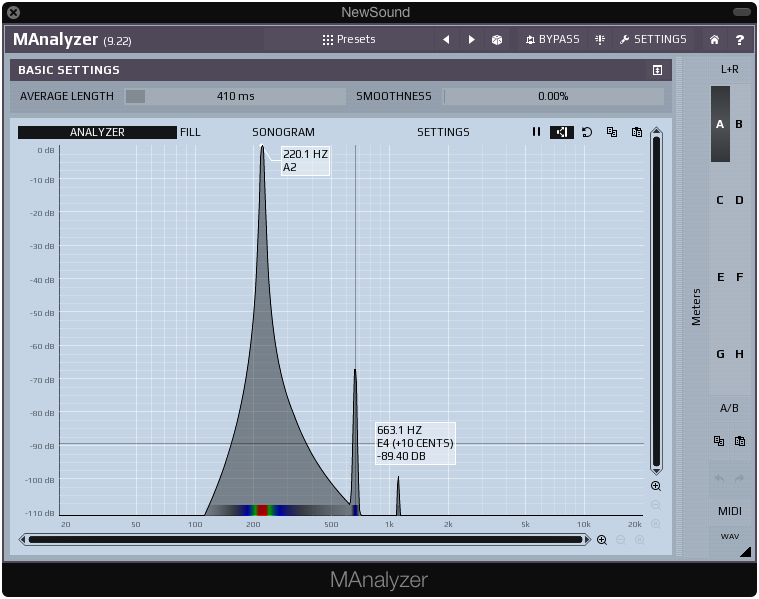
Waves PuigChild (Fairchild)
Without noise, 3 dB reduction

PuigChild 670 Frequency analysis

With noise 50 Hz noise

Frequency analysis with 50 Hz noise

Focusrite Red 3 Compressor
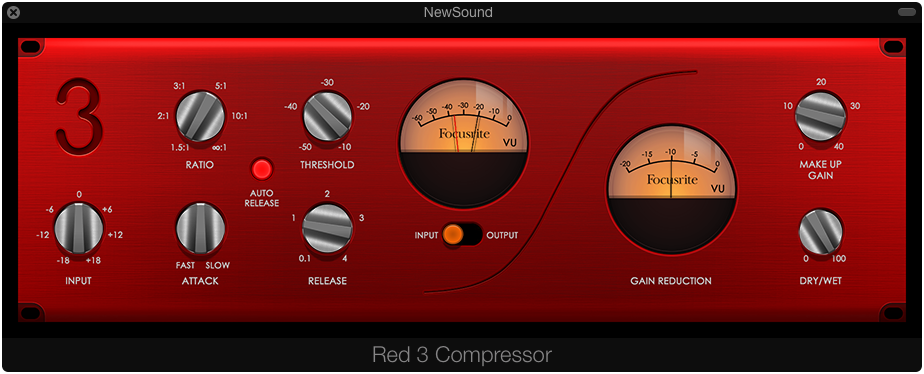
Frequency analysis with 50 Hz noise

Waves Kramer PIE
Analog set to off (no noise), 3 dB reduction

Frequency analysis, no noise
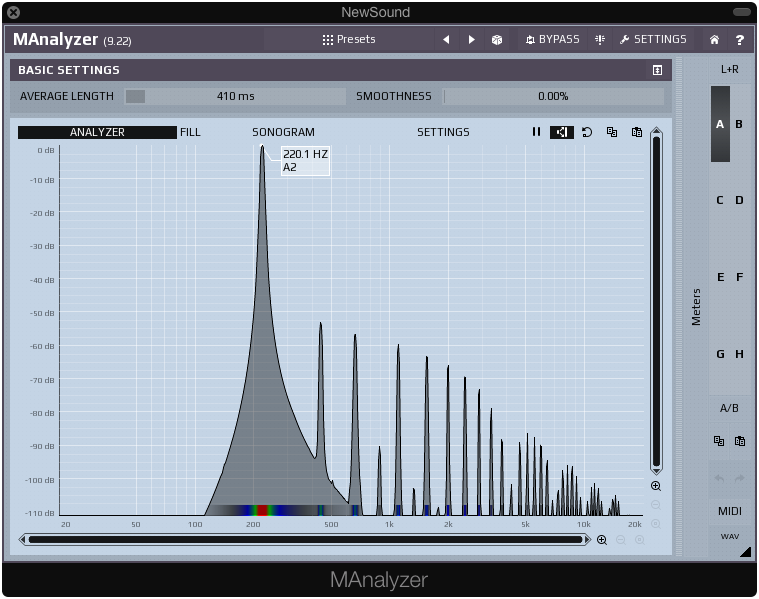
PIE with 50 Hz noise
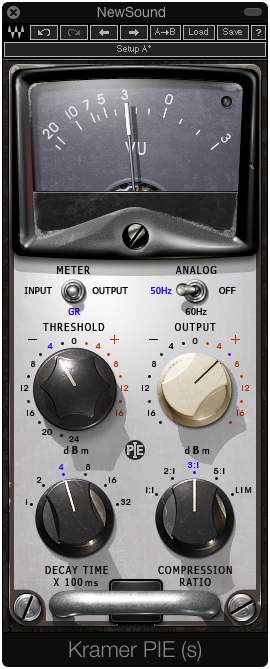
Frequency analysis, with 50 Hz noise
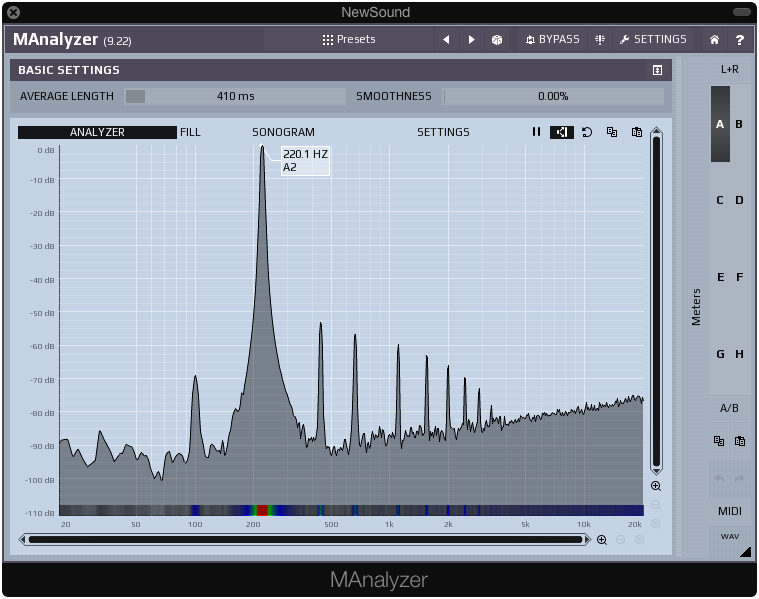
Preamps, EQ and other interesting plugins
Waves Kramer HLS
Analog set to off and noise to LO
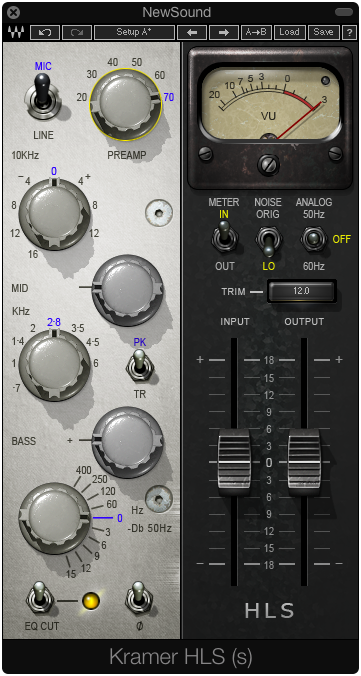
Frequency analysis, no noise
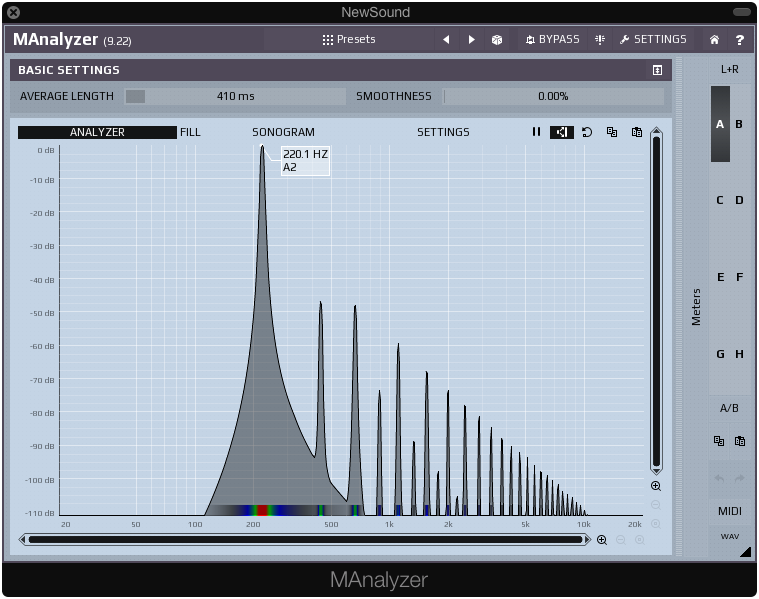
Analog to 50 Hz and noise to LO

Frequency analysis, with analog noise

Waves PuigTec MEQ5
With these examples it's easy to see why certain plugins just "sound good" without changing any parameters, the secret is added harmonic content.
Plugin added with MAINS to OFF (no noise) and no gain or boost

Frequency analysis, without analog noise

Plugin added with MAINS to 50 Hz (with noise and 50 Hz hum), no boost or cut

Frequency analysis, without analog noise. Note the peak at 50 Hz
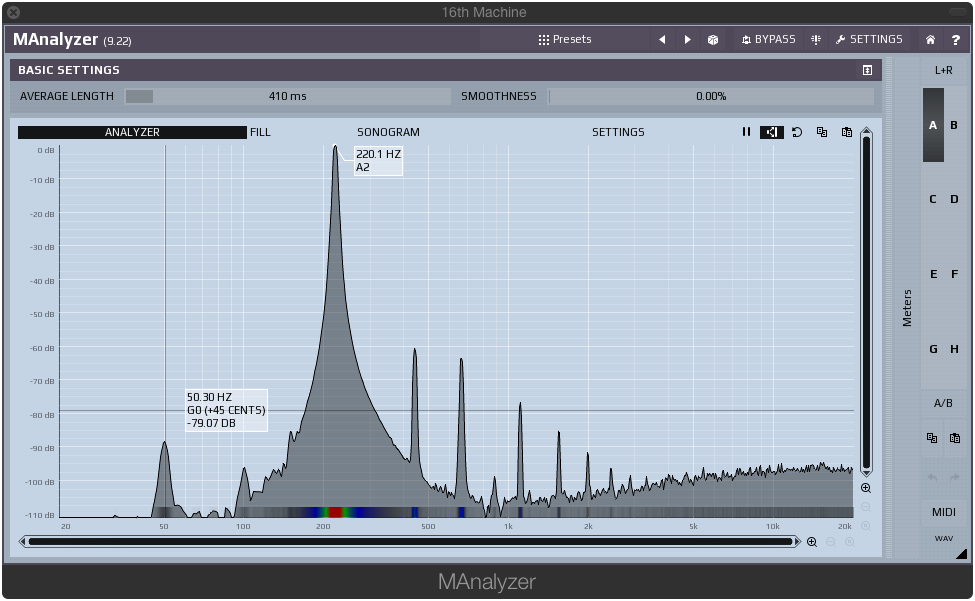
Waves PuigTec EQP1A
Plugin added with MAINS to OFF (no noise) and no boost or cut

Frequency analysis, without analog noise

Plugin added with MAINS to 60 Hz (with noise and 60 Hz hum), no boost or cut

Frequency analysis, without analog noise. Note the peak at 60 Hz
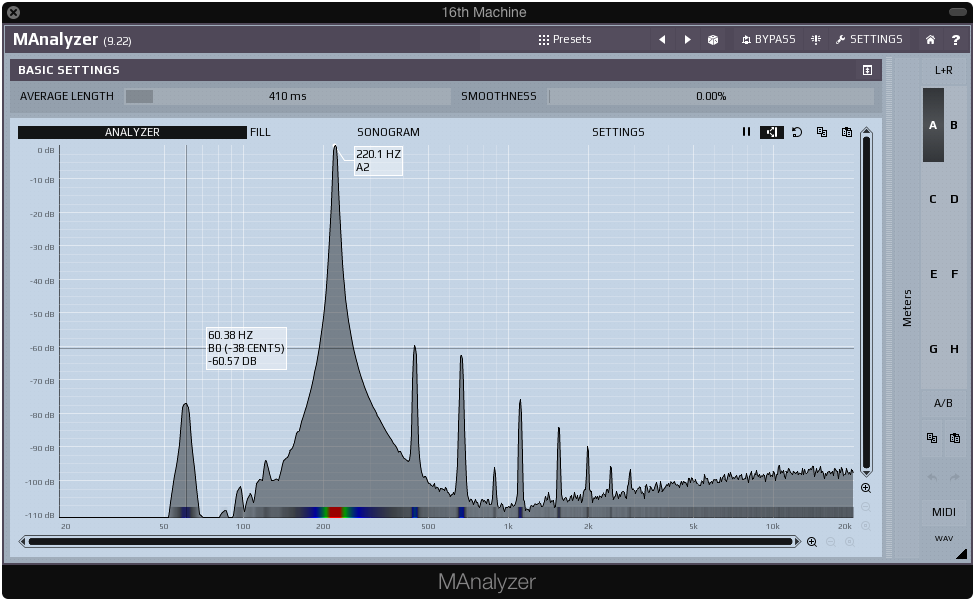
Waves RBass
Note that this plugin adds harmonics above the fundamental frequency
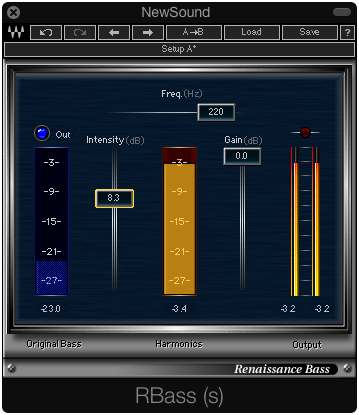
RBass frequency analysis
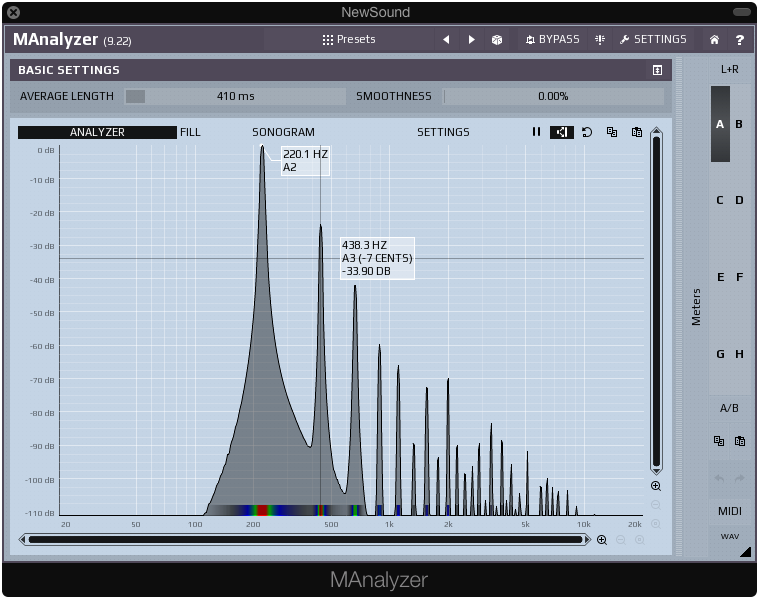
Waves LoAir
Note that this plugin adds harmonics below the fundamental frequency
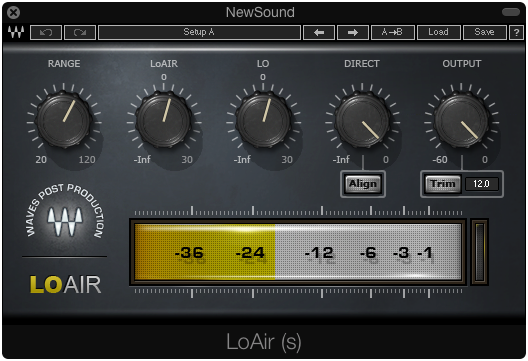
LoAir frequency analysis
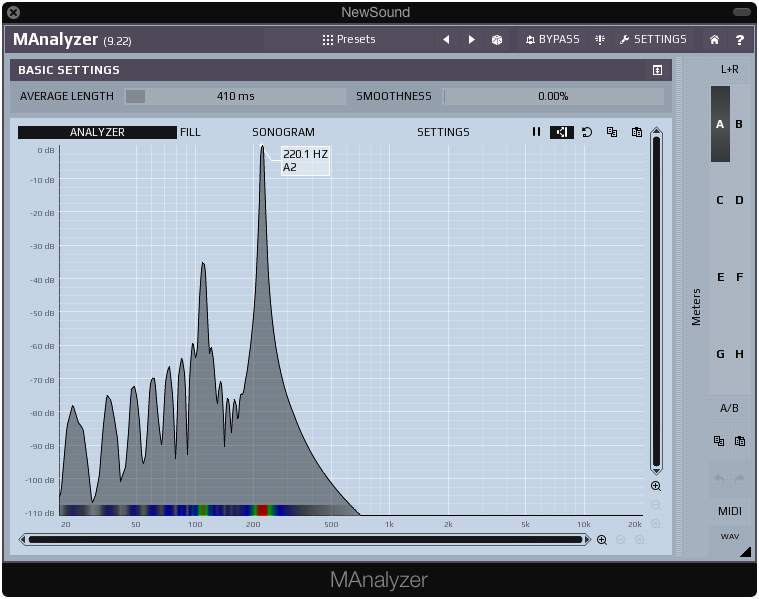
Waves Scheps 73
Preamp set 30
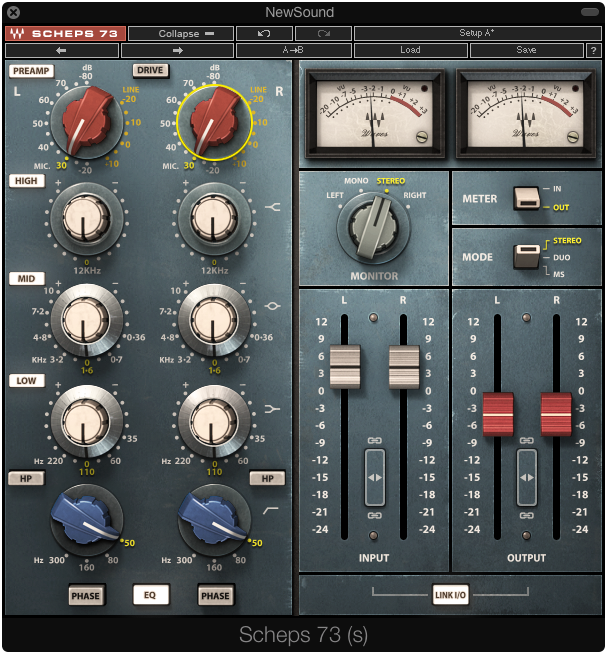
Scheps 73 frequency analysis. Most of the harmonic content comes from the added gain in the preamp section.
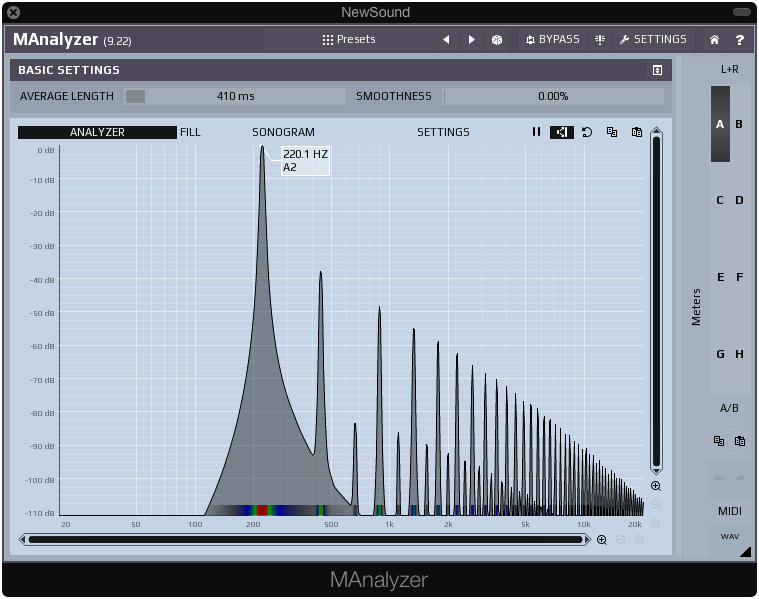
Waves NLS Channel
MIKE console with drive but no noise

NLS Channel frequency analysis, no noise
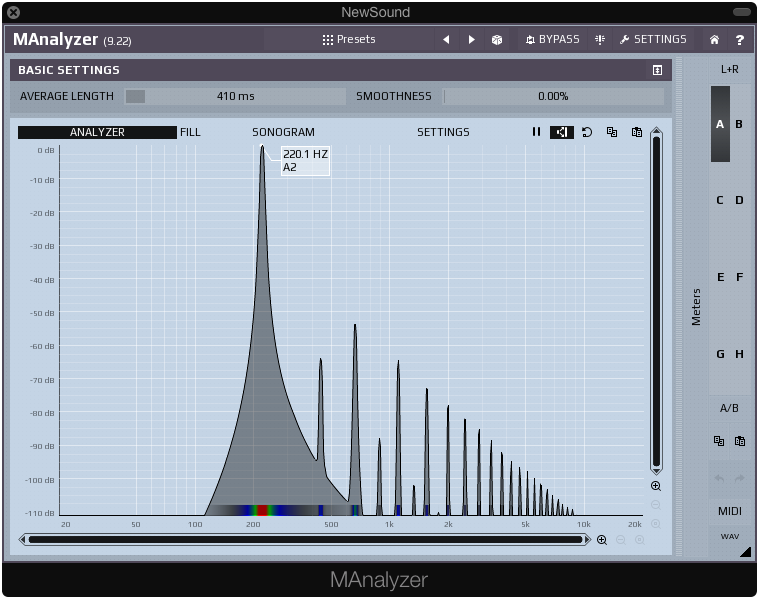
MIKE console with drive with noise added via the VCA tab
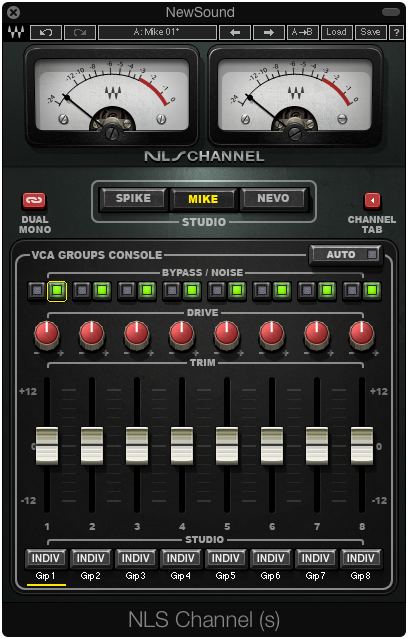
NLS Channel frequency analysis with noise

Waves H-EQ
Analog UK-Vintage output

H-EQ frequency analysis with analog output
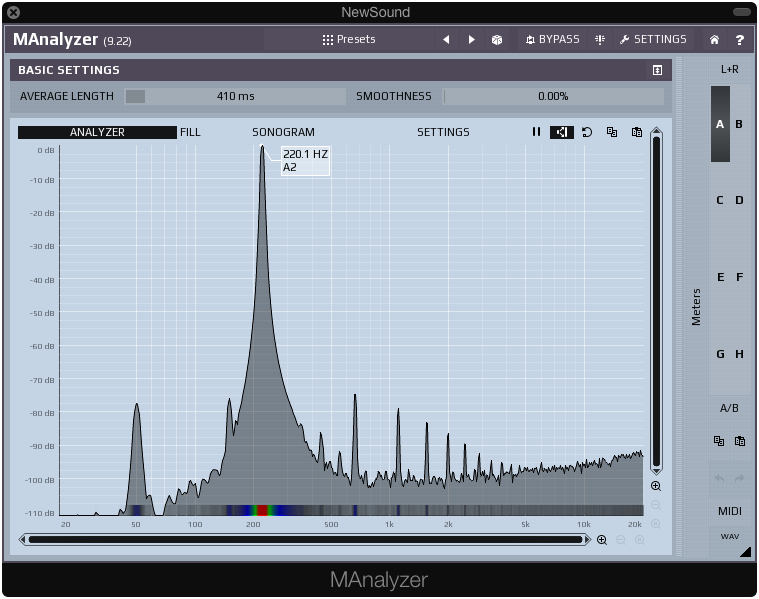
Vitamin
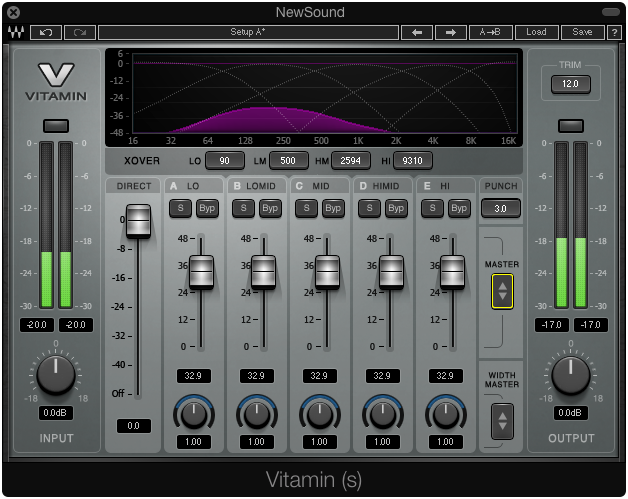
Vitamin frequency analysis. Note how much is added, both above and below the 220 Hz sine wave
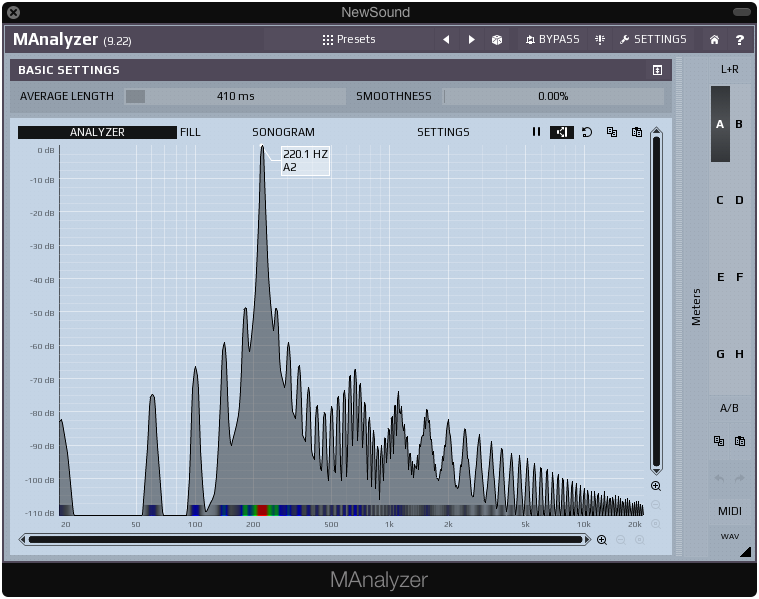
Softube Saturator
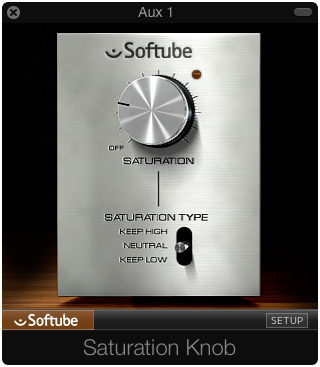
Frequency analysis of Softube Saturation Knob (adding both even an odd harmonics)
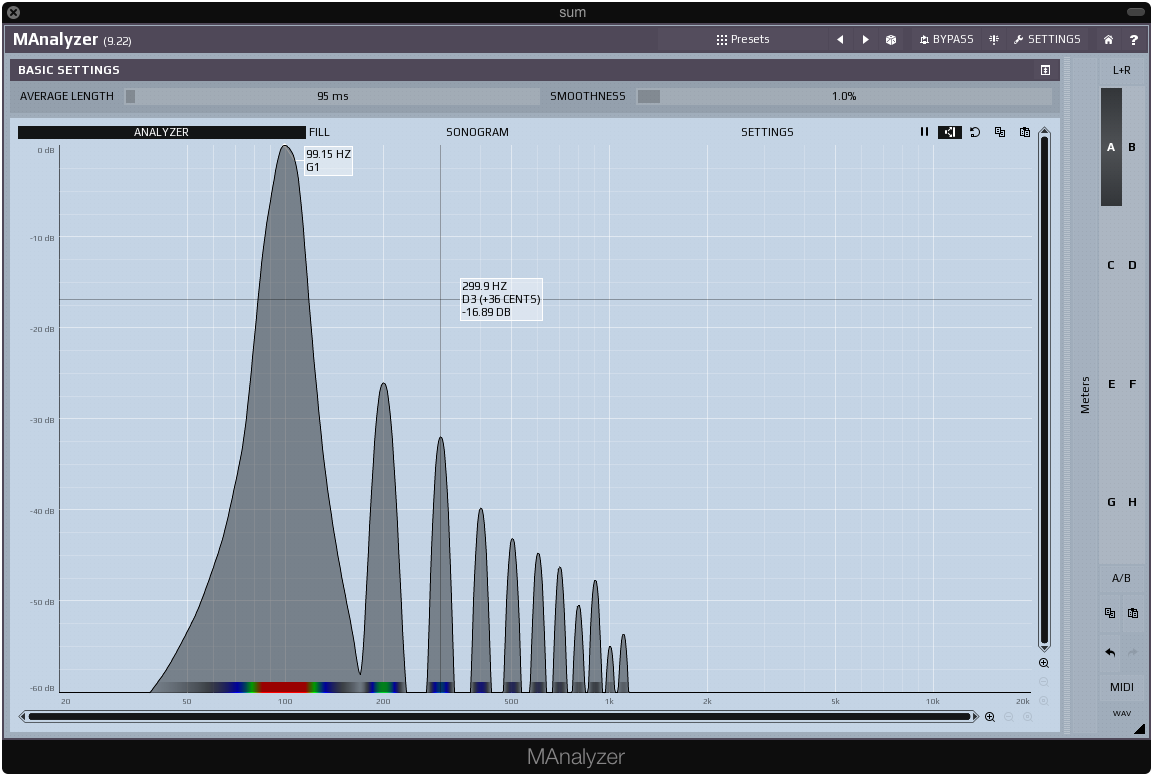
Shattered Glass Audio SGA1566 Saturator
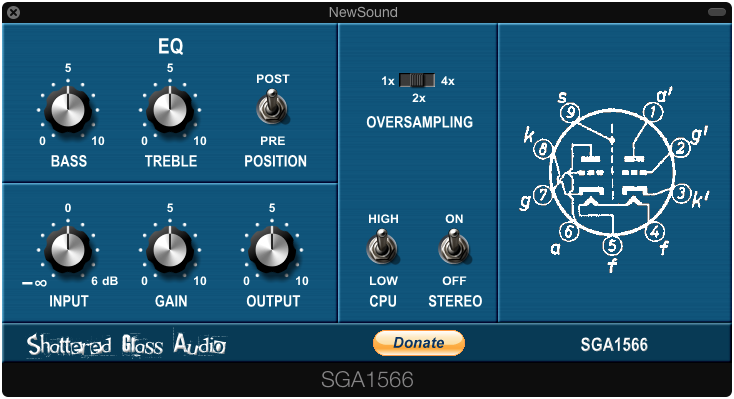
Frequency analysis
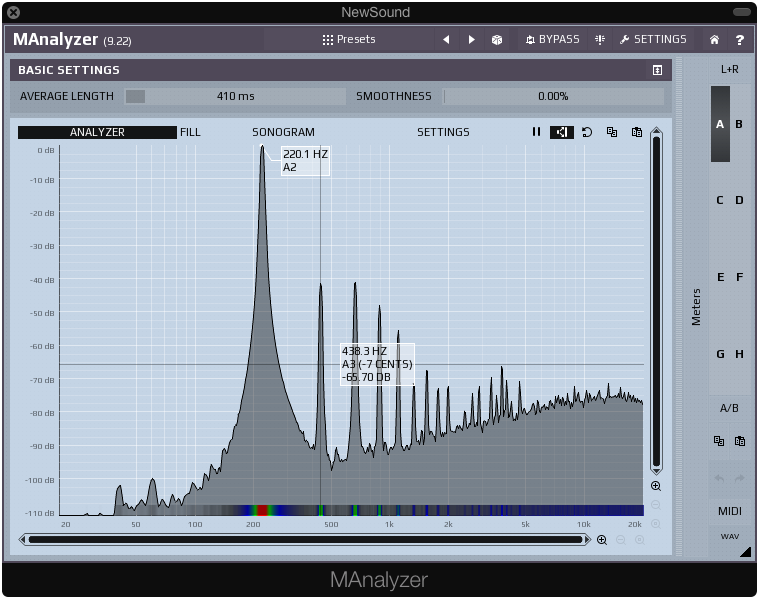
Nick Crow Lab TubeDriver

Frequency analysis
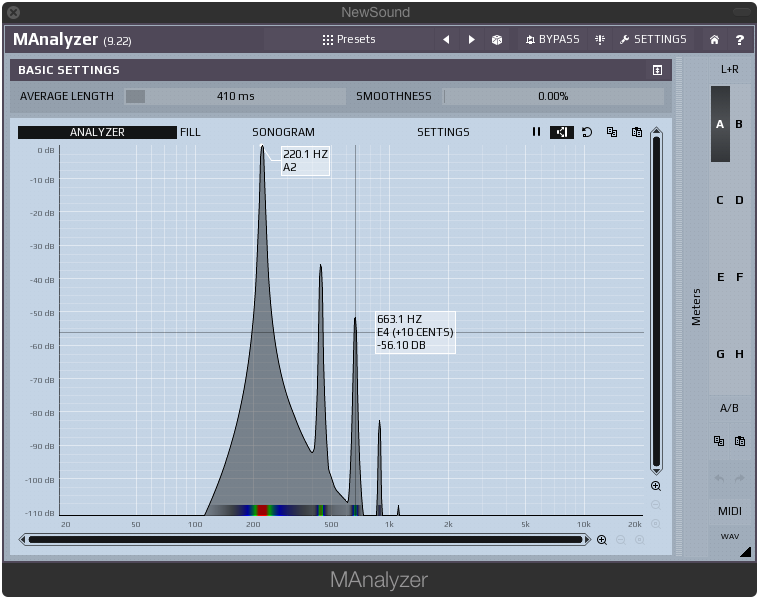
Native Instalments Reaktor Saturation
It's quite easy to create your own harmonic distortion plugin with Reaktor

A realy simple structure
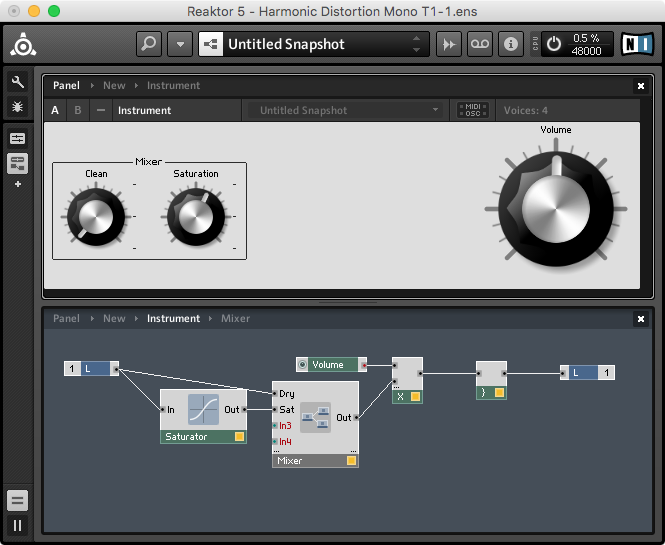
Frequency analysis, adding odd harmonics at 300 Hz, 500 Hz, 700 Hz, etc

This is another Reaktor Ensemble that tries to emulate tape saturation
https://www.native-instruments.com/en/reaktor-community/reaktor-user-library/entry/show/6617/
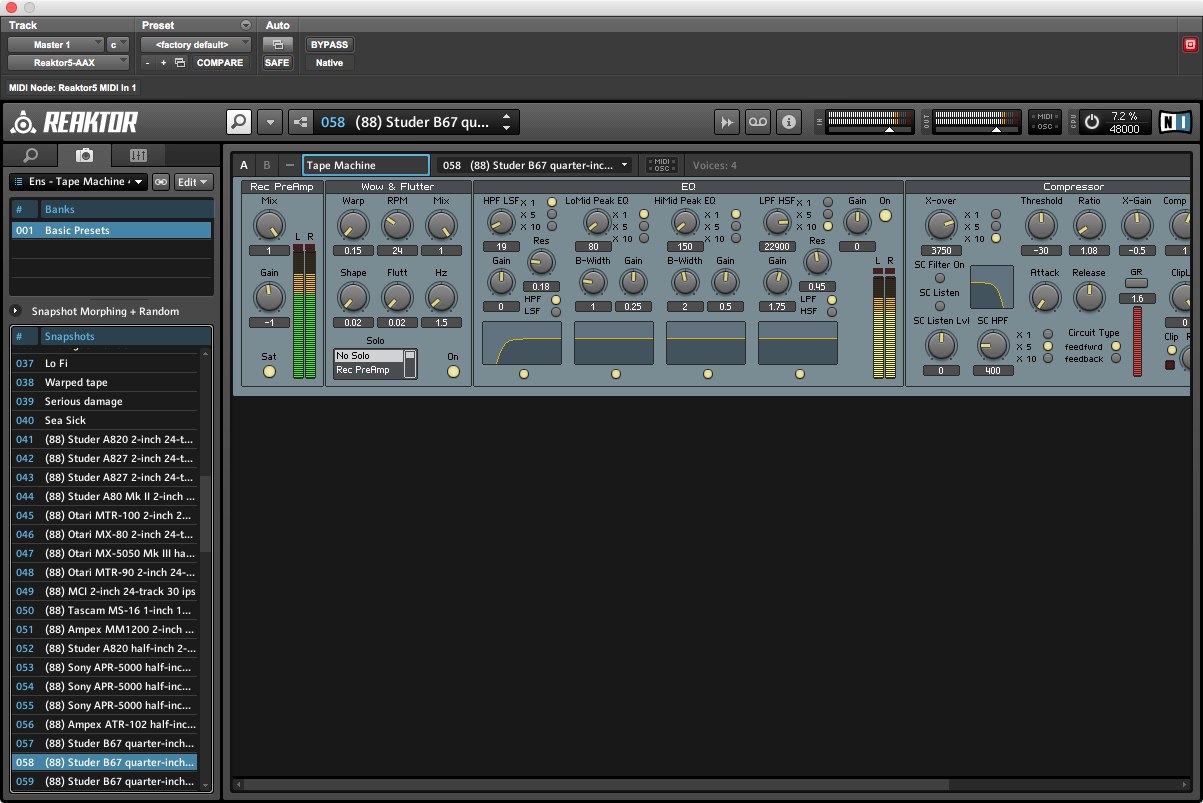
Frequency analysis of the Studer B67 preset

|•| – 2016-04-28